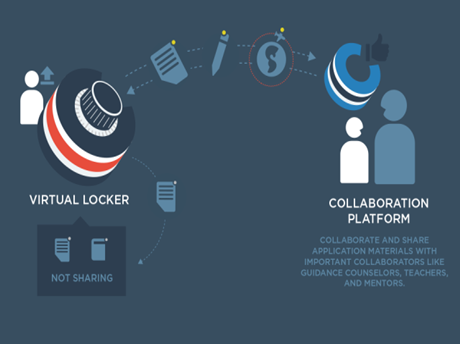3月10日最新SAT阅读考试真题火速来袭(三)
- 2018年03月12日11:56 来源:小站整理
- 参与(0) 阅读(7426)
敲黑板,划重点!这是一篇来自3月10日SAT阅读的考试真题,备考的宝宝们千万别做过这篇训练阅读的复习资料哦。
阅读本次篇章难度水平趋于正常,顺序类似于2017年8月北美出题。
阅读原文
In the spring of 1879, Hermann Lau shot two white-winged choughs,Corcorax melanorhamphos, off their nest in Queensland, Australia. He watched asadditional choughs continued to attend the nest, proving that a cooperativegroup shared parental care ( 1). Since then, cooperatively breeding birds havehad a starring role in efforts to explain the evolution of complex animalsocieties. We now know that “helpersat-the-nest” who forgo reproduction areoften relatives of the breeding pair. Genetic payoff is, thus, one of severaladvantages that helpers can gain from their super? cially altruistic behavior (2). On page 1506 of this issue, Feeney et al. ( 3) show that collective defenseagainst brood parasites (see the ? gure) can enhance such bene? ts ofcooperation. Why do some bird species cooperate and others do not? Globalanalyses have shown that cooperative breeding (now known from 9% of species) isassociated with a slow pace of life (characterized by high survival rates andlow turnover of breeding territories) ( 4), monogamy (which facilitates kinselection within families) ( 5), and unpredictable environments (such as aridzones) that might favor cooperation as a bet-hedging strategy ( 6). But thesefactors often fail to predict the incidence of cooperation among relatedspecies or within geographical regions ( 7). Feeney et al.’s study is built onthe premise that brood parasitism—reproductive cheating by species such ascuckoos and cowbirds, which exploit other birds to raise their young—is asevere selection pressure on their hosts’ breeding strategies. Parasitizedparents typically not only lose their current offspring but also waste a wholebreeding season raising a demanding impostor. The best way to avoid parasitismis to repel adult parasites from the nest. Feeney et al. show that socialitycan be pivotal to this process. The authors begin by unfolding a new map. Usingdata compiled by BirdLife International, they show that the global distributionof cooperatively breeding birds overlaps strikingly with that of broodparasites. This overlap need not re? ect a causal relationship:
The same unpredictable environments thatfavor cooperation could also favor alternative breeding strategies such asparasitism. However, the authors go on to show that even within geographicalregions rich in both parasites and cooperators—Australia and southern Africa—cooperativebreeders are much more likely than noncooperative species to be targeted bybrood parasites. To determine the reasons for this correlation, Feeney et al.studied cooperative breeding in superb fairy-wrens (Malurus cyaneus) inAustralia. Horsfield’s bronze-cuckoos (Chalcites basalis) should bene? t fromtargeting larger groups of fairy-wrens because more helpers mean faster chickgrowth. Yet, data from a 6-year field study show that in practice, cuckoosrarely experience this advantage, because larger groups of fairywrens much moreeffectively detect and repel egg-laying intrusions by cuckoo females,mobilizing group defenses with a cuckoospeci? c alarm call. Thus, cooperationand parasitism could reciprocally in? uence one another: Cooperators might bemore attractive targets because they make better foster parents, but once
exploited by parasites, they are alsobetter able to ? ght back, helping cooperation to persist ( 8). Feeney et al. ?nd that superior anticuckoo defenses in larger groups account for 0.2 moreyoung ? edged per season on average than smaller groups—a substantial boostgiven the fairy-wrens’ low annual fecundity. These results show convincinglythat defense against brood parasites augments the bene? ts of helping, promotingthe persistence of cooperation. But as the authors note, they cannot revealwhat caused cooperation to evolve initially. Brood parasitism alone cannotresolve the question of why some birds breed cooperatively. For example,cooperative king? shers and bee-eaters are heavily parasitized in Africa butnot in Australasia, showing that other advantages of helping behavior are suf?cient for cooperation to persist. But we should take parasitism seriously as animportant force in a cooperative life. Indeed, it may provide a mechanismcontributing to the previously discovered global correlates of cooperation (4–6). Some insight into the likely order of evolution might come from furthercomparative predictions. For instance, if cooperation arose fi rst as a defenseagainst parasitism, cooperators may be most prevalent among hosts that relyheavily on repelling adult parasites, rather than on antiparasite strategies atlater reproductive stages, such as egg or chick discrimination ( 9). Incontrast, if parasites target existing cooperators because they providesuperior care, this should be especially true of parasites whose chicks havethe most pressing needs—for instance, those in parasitic families with largebody size relative to their hosts or those whose chicks do not kill host youngand therefore must share their foster parents’ care. Could there be a similarassociation between cooperation and parasitism among other highly socialanimals? Cooperation in mammals clearly persists irrespective of parasitism, giventhat there are no known brood-parasitic mammals (perhaps because it would bediffi cult for a mammal to insert live young into another’s care). Butrepelling parasitic egg-laying intrusions is crucial to many hosts of sociallyparasitic insects and has shaped sophisticated adaptations and counterdefensesfor and against brute force and secrecy ( 10). It will be fascinating toexplore how selection for antiparasitic defense has interacted with monogamyand defensible resources as forces favoring kin-selected cooperation ininvertebrates, touching on an active debate in evolutionary biology. Answers tosuch comparative questions will ultimately be limited by our knowledge ofnatural history. The work by Feeney et al. is testament to the evolutionaryinsights enabled by careful long-term fi eld studies, together with thecumulative legacy of those naturalists who made the unglamorous effort torecord and publish observations of real animals in real places.
文章概述
作者:Claire N. Spottiswoode
题目:How Cooperation Defeats Cheats
本篇文章的主旨是红嘴山鸦之间的合作对于它们遭到寄生虫入侵的影响。文章中谈到,红嘴山鸦之间的合作和寄生虫的入侵是相互作用的。合作容易让它们变成寄生虫的目标,与此同时,它们之间的合作也让它们更容易对抗寄生虫。在文中,作者也阐明了群体大小对于感染寄生虫几率的影响。越小的群体,感染几率越大,越大的群体,感染几率越小。在文章的最后一段,作者表明研究的结果虽然能够说明合作对于寄生物入侵的影响,但是暂时还不能揭开红嘴山鸦最初是如何进化出合作的特性的。
考试题目
1.主旨题,问作者这篇研究的目的是什么。
2.作者文章中收集的data有什么样的作用?
3.词汇题:reflect在文中的意思。
4.词汇题:favor在文中的意思。
5.独立取证题:问那句话是文中作者提到的,群体数量对寄生物影响的证据。
6.细节题:红嘴山鸦在繁殖中的特点
7.目的题:最后一段的作用
8.图表题,问从第一个图表能得出什么关于群体大小和寄生的关系。
9.图表题,问从图表中能得出什么样的比对信息。
10.图表题,问从第二个图表中能得出什么。
以上是小站为宝宝们整理出来的最新SAT阅读考试真题第一篇,稍后献上3月10日考试其它阅读真题,敬请期待哦。小站祝备考SAT的宝宝们取得理想成绩!小站会一直陪在宝宝们身边,加油~

























